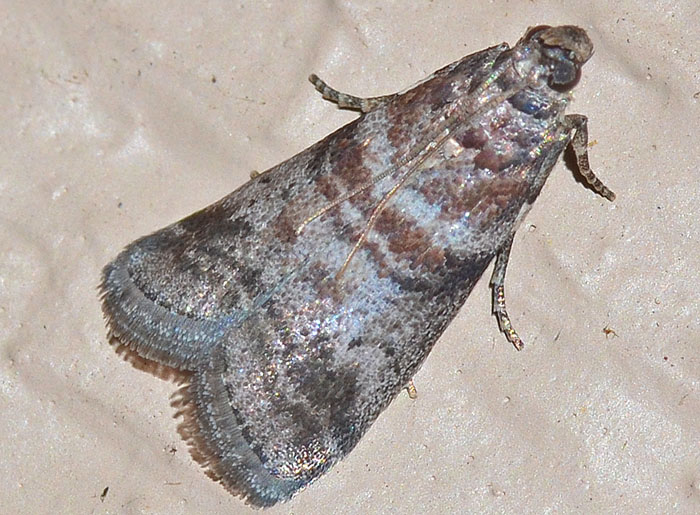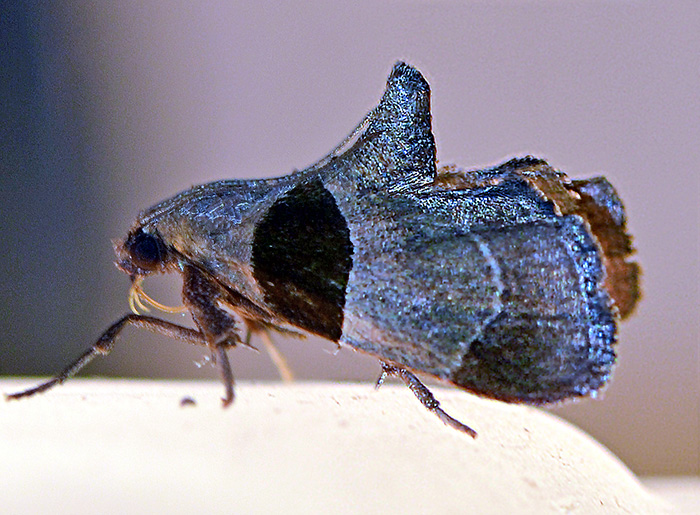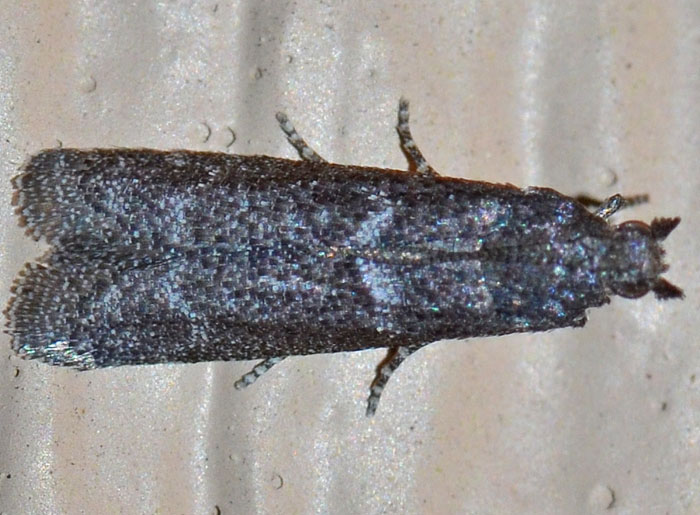 Cabnia myronella - Hodges#6037. | The forewings of this moth are uniformly colored, dark ash-gray and covered by paler scales. Its antennae have large basal joints. The wing span is slight below 1 cm. bug guide (this photo): http://bugguide.net/node/view/1348174 | |
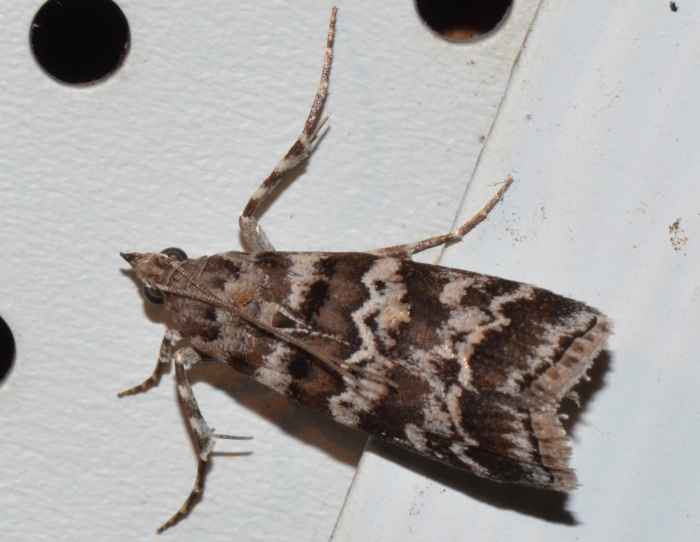 Dioryctria amatella - Hodges#5853 | This moth is probably a Southern Pine Coneworm Moth (Dioryctria amatella), also commonly known as a pitch moth. It is one of the most damaging pests of pine seed orchard crops but also attacks other parts of pine trees. A symptom of infestations is large external masses of pitch exuding from the feeding sites of caterpillars. D. amatella is one of six species of pine coneworrns in Florida. bug guide (this photo): http://bugguide.net/node/view/586610 UF: http://entnemdept.ufl.edu/creatures/trees/pine_coneworm.htm | |
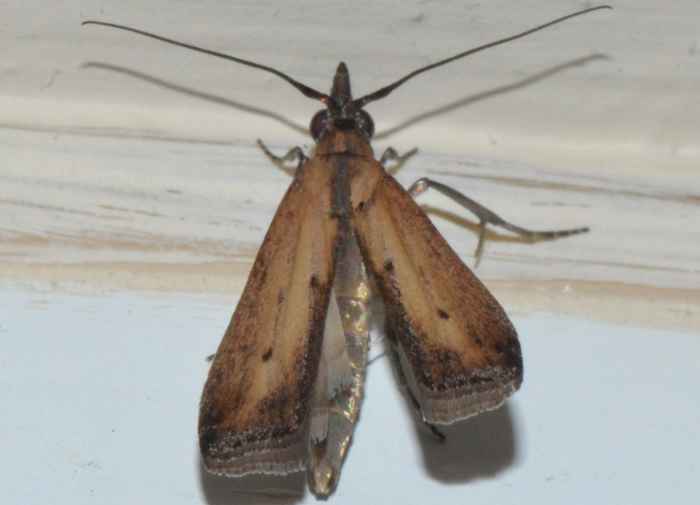 Elasmopalpus lignosellus - Hodges#5896 | Elasmopalpus lignosellus is an agricultural pest and often found in the southeastern United States. Its complete life cycle usually requires 30 to 60 days. At rest, the female moth is typically charcoal-colored, while the male moth is tan-colored with charcoal wing strips. The thorax is light in males, but dark in females. The hind wings of both sexes are transparent with a silvery tint. bug guide (this photo): http://bugguide.net/node/view/594680 UF: http://entnemdept.ufl.edu/creatures/field/lesser_cornstalk_borer.htm | |
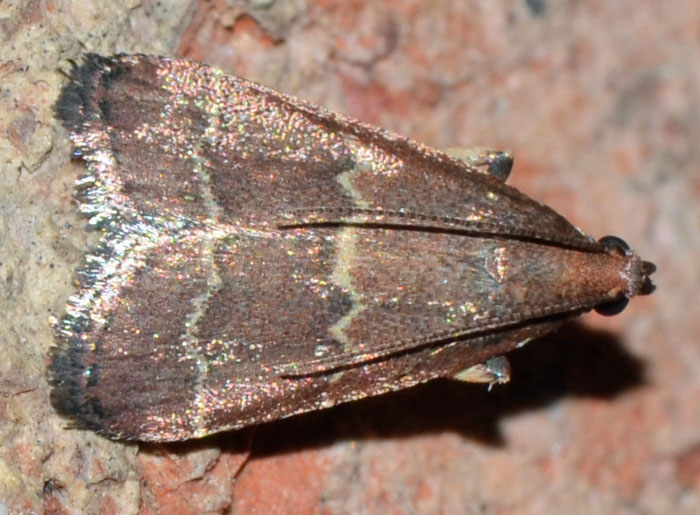 Heliades mulleolella - Hodges#5574. | To me this moth looked like Parachma ochracealis (see below) but an expert determined it to be Heliades mulleolella. Part of the difference is apparently the jaggedness of the AM and PM lines in this specimen. H. mulleolella is the only known species north of Mexico. bug guide (this photo): http://bugguide.net/node/view/973692 | |
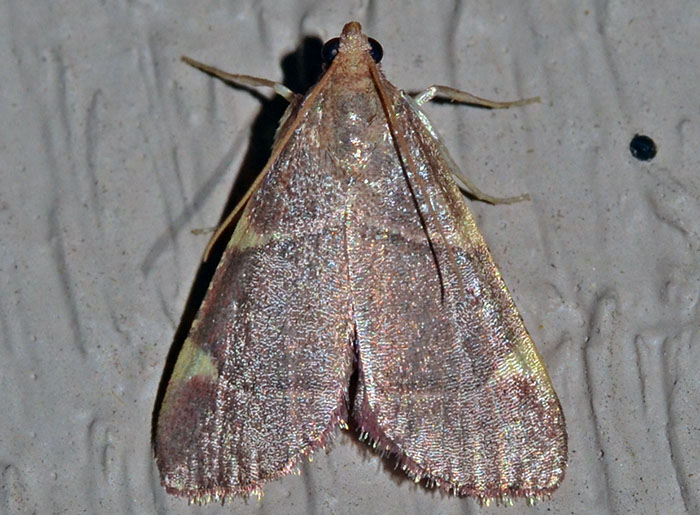 Hypsopygia sp.. | There is not much information available on the genus. Hopefully someone can help me identify this moth down to the species level. My guess is H. binodulalis. bug guide (this photo): http://bugguide.net/node/view/1368382 | |
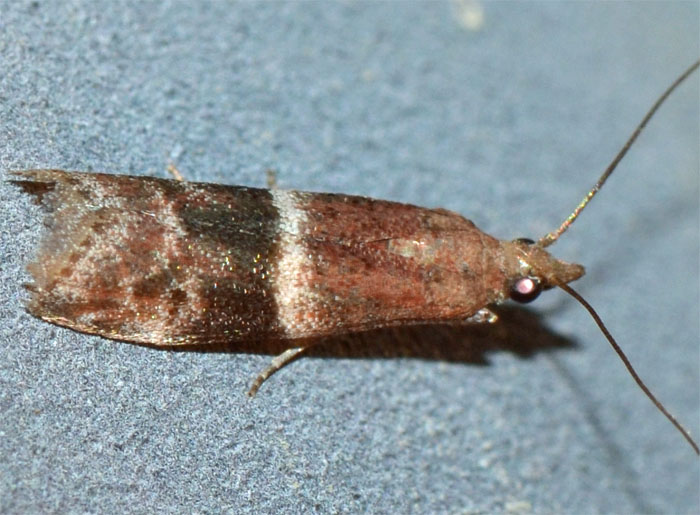 Moodna ostrinella - Hodges#6005 (Darker Moodna Moth). | The larva of this widespread, little moth is a scavenger of dried seeds, mummified fruits, dried rose buds, rose galls, and acorns. The literature also reports peach, apple, pear, loquat, iris, and oak as host plants. The brick red to brown forewings have a dark median band with a broad white edge.
bug guide (this photo): http://bugguide.net/node/view/1348171 | |
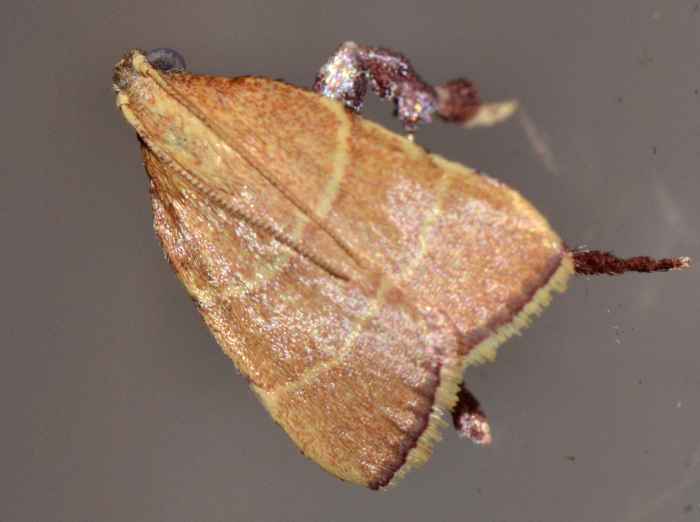 Parachma ochracealis -Hodges#5538 (Parachma Moth). | Parachma Moths (Parachma ochracealis) are mainly found in the Southeastern states and the Southwest where specimens tend to be paler. This species has been formerly referred to as Parachma tarachodes. It does have striking and long front legs (difficult to discern in this photo) which give it a 45 degree ("sitting dog") posture. bug guide (this photo): http://bugguide.net/node/view/572303 | |
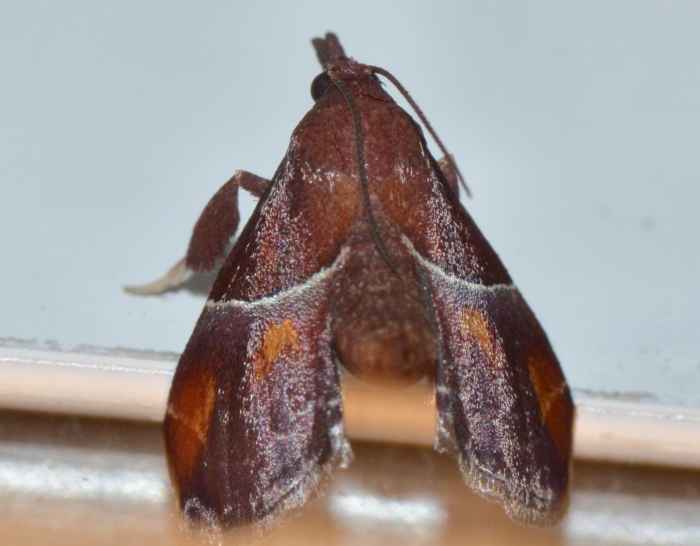 Penthesilea sacculalis - Hodges#5555. | This small moth is Penthesilea sacculalis. It can be found in the Southeastern US. The genus has only one species in our area. In Greek mythology, Penthesileia was an Amazonian queen. bug guide (this photo): http://bugguide.net/node/view/570979 | |
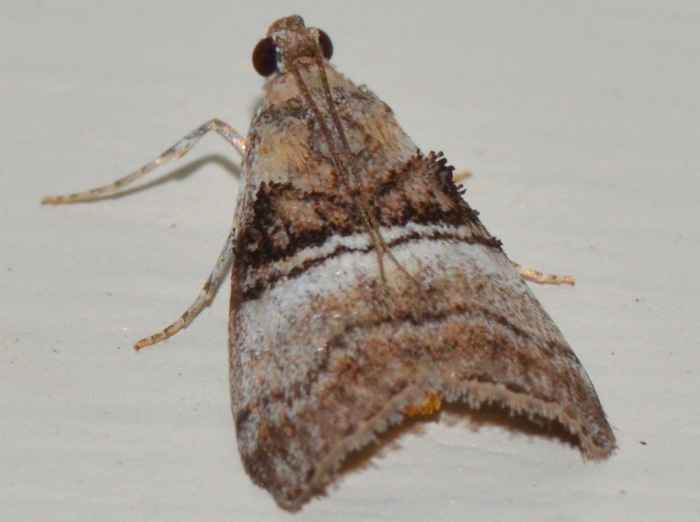 Pococera sp.. | This moth is possibly Pococera asperatella (Maple Webworm Moth - Hodges#5606) or Pococera militella (Hodges#5604). The genus has 27 species in North America. bug guide (this photo): http://bugguide.net/node/view/573276 | |
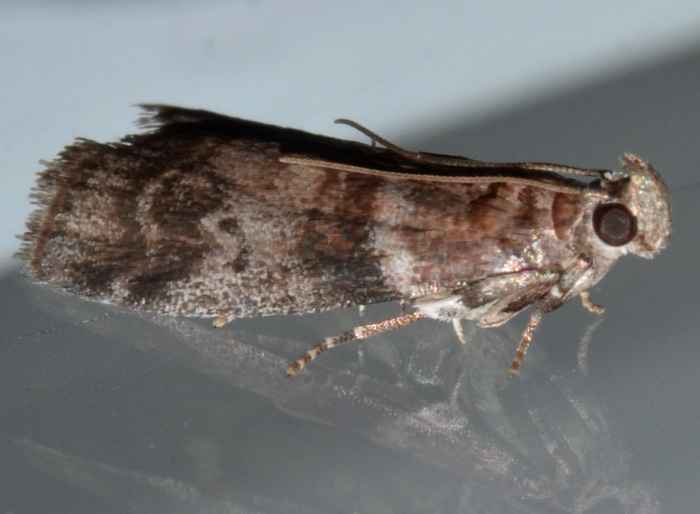 Sciota uvinella - Hodges#5802 (Sweetgum Leafroller). | This is probably Sciota uvinella but several other species in the subfamily Phyctinae are similar and can only be distinguished by their slightly different forewing patterns. The larvae of the Sweetgum Leafroller feed--as the name suggests--on sweetgum (Liquidambar styraciflua) which do grow in our backyard.
bug guide (large photo): http://bugguide.net/node/view/684805 bug guide (small photo): https://bugguide.net/node/view/994910 | |
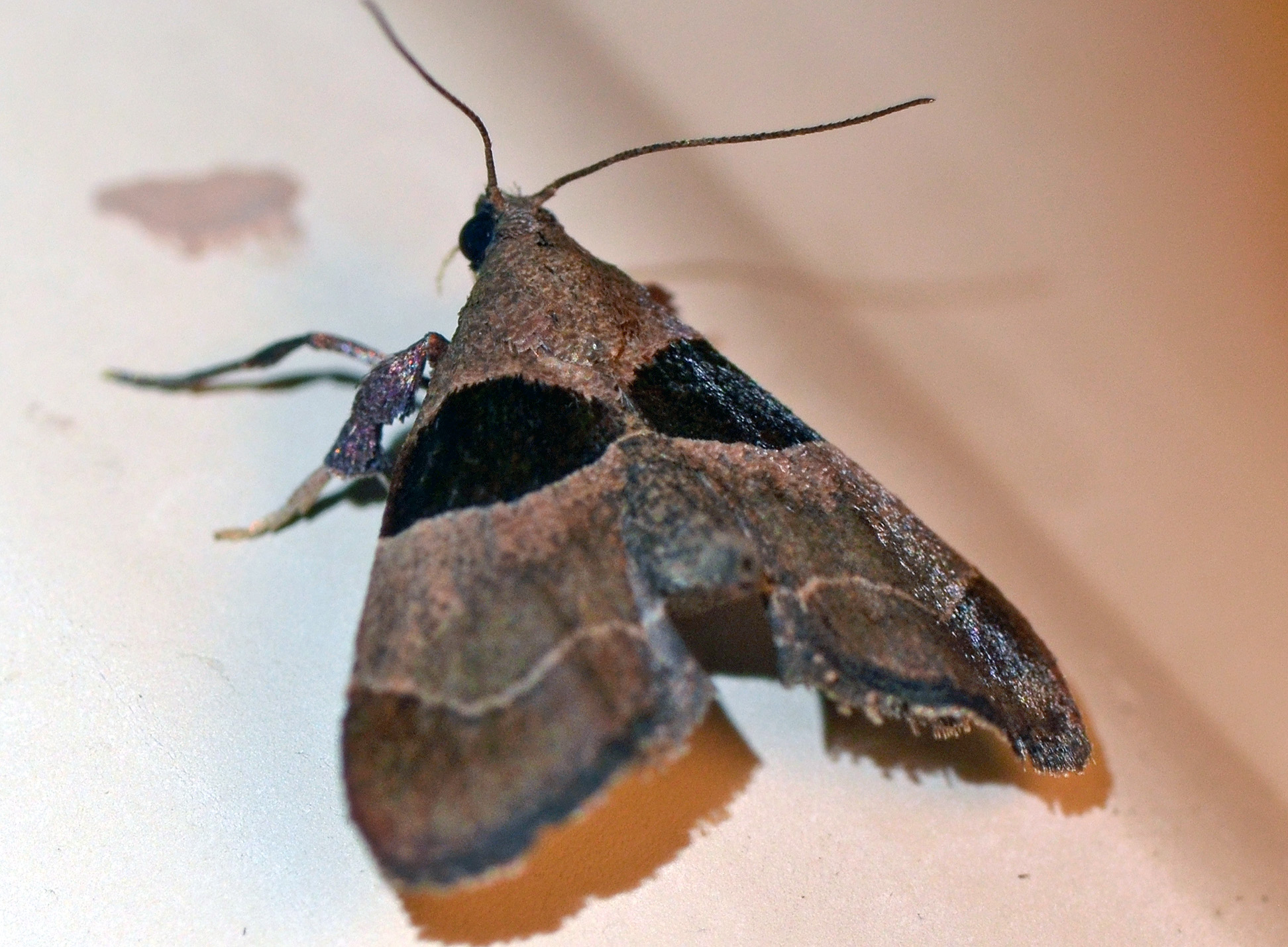 Tosale oviplagalis - Hodges#5556 | My first new moth of 2020. This species is sexually dimorphic with males being brownish and having elongated scales at the tip of their abdomen, whereas females have a similar pattern in shades of gray. This moth often perches with abdomen arched upward, wings pushed down. I found this one at our porch light.
bug guide (these photos): https://bugguide.net/node/view/1788278 |

